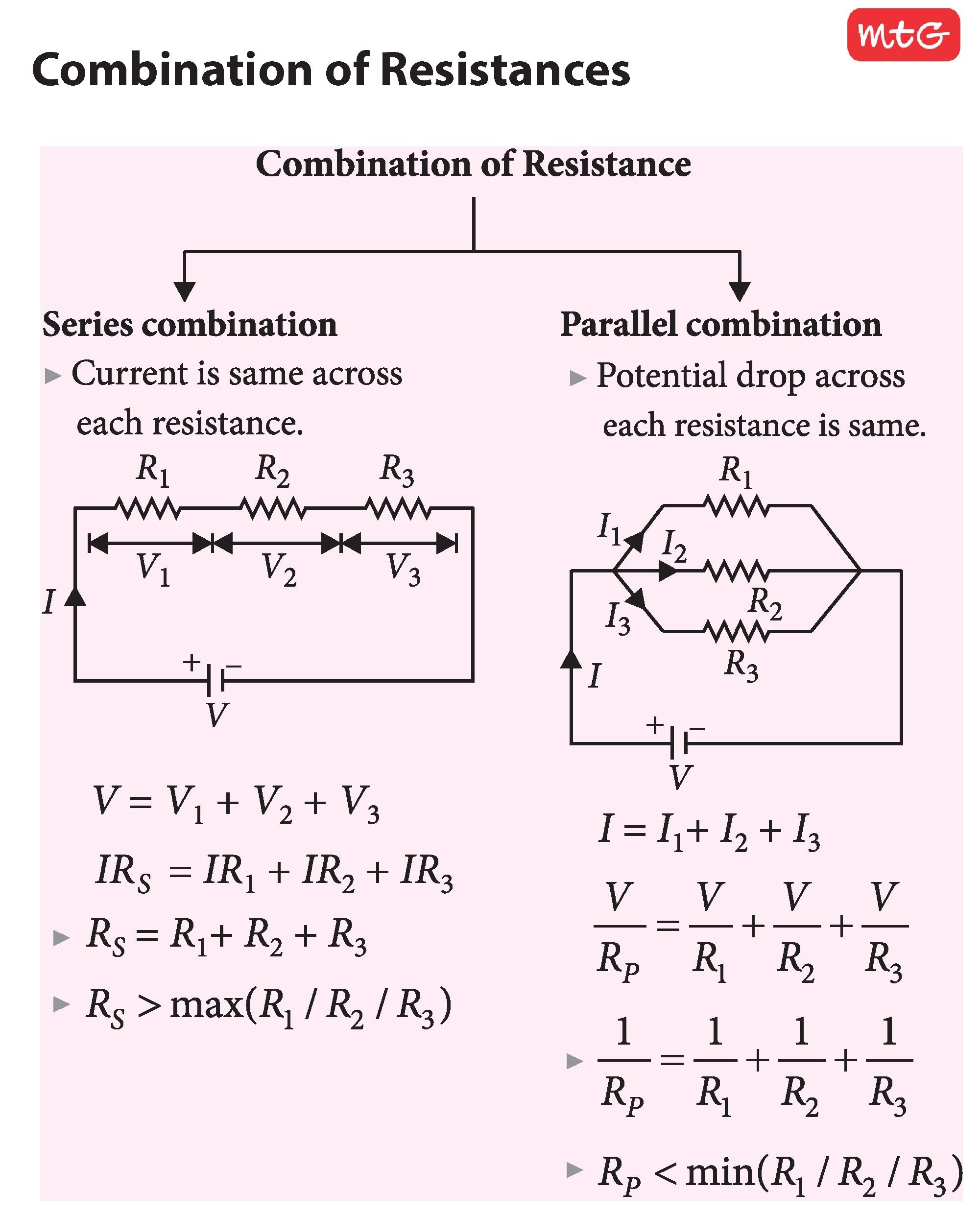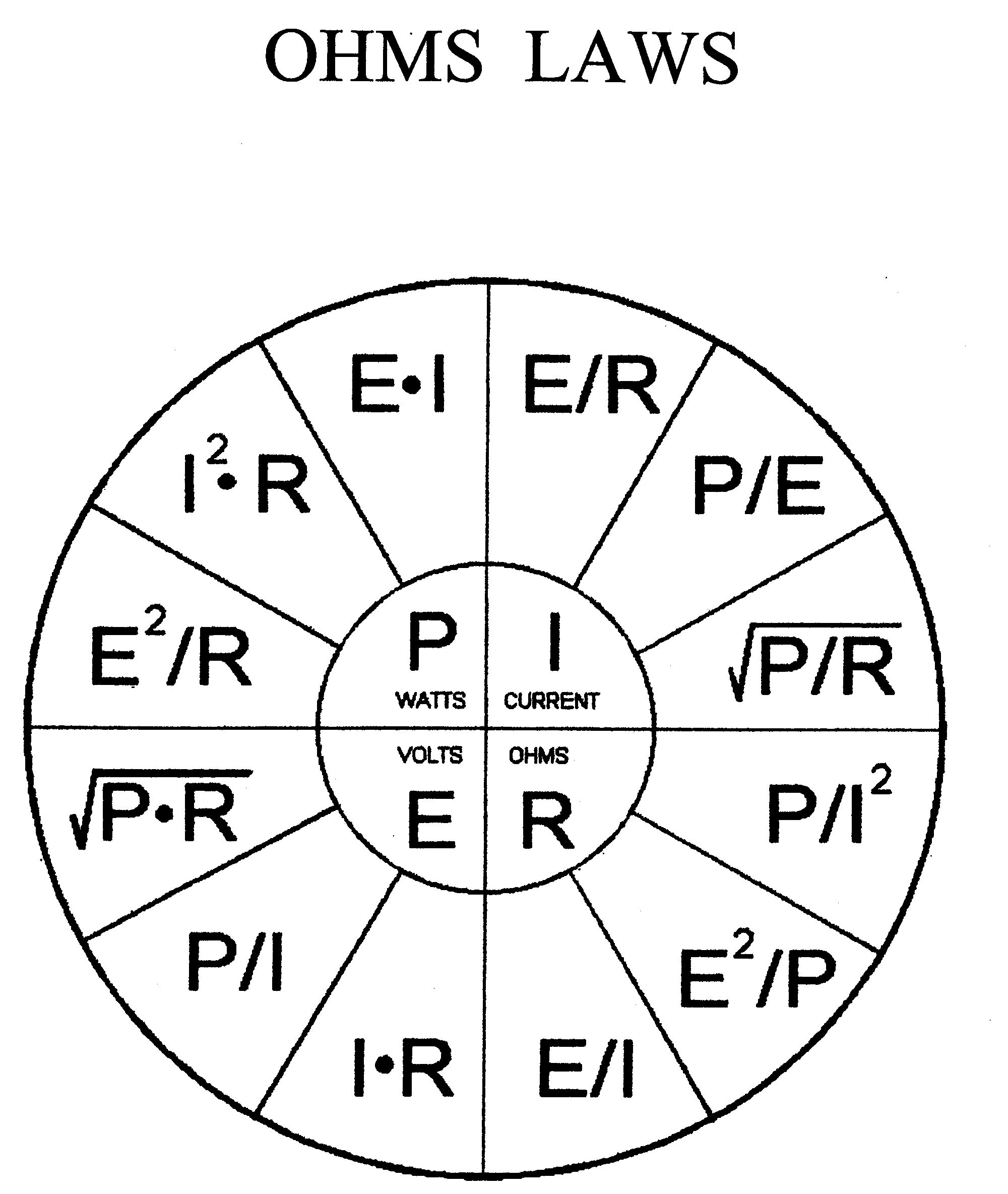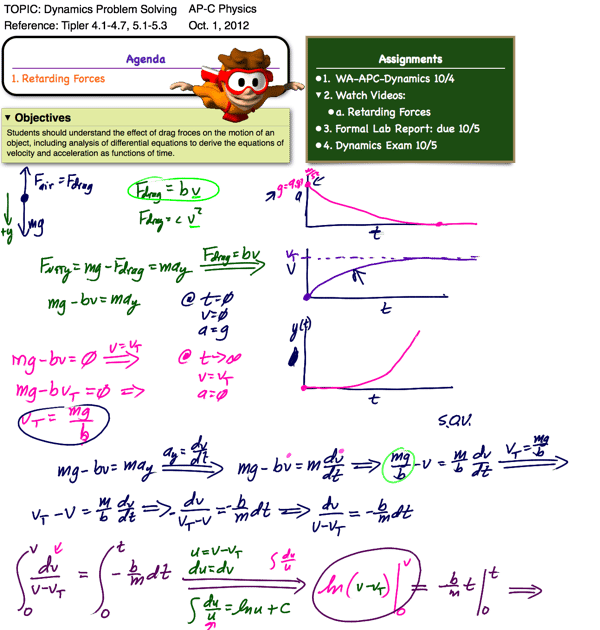Effect Of Temperature On Electrical Resistance
The resistance of all the materials is affected by the change in temperature. The effect of the temperature change is different depending on the material.
Metals
The electrical resistance of pure metals increases with temperature increases. This increase in resistance is large for the normal range of temperatures. Thus, metals have a positive temperature coefficient of resistance.
Alloys
The electrical resistance of alloys also increases with an increase in temperature. This increase in resistance is irregular and relatively small. Thus, alloys have a low value of positive temperature coefficient of resistance.
Semi-Conductors, Insulators & Electrolytes
The electrical resistance of semiconductors, insulators& electrolytes decreases with an increase in temperature. As the temperature is increased, many free electrons are created. So, there is a drop in the value of electrical resistance. Thus, such material has a negative temperature coefficient of resistance.
Definition Of Resistance: Ohms Law
According to Ohms law, the electric current flowing through a conductor is proportional to the potential difference between the two ends of the conductor.
- Ohms law holds true only if we keep all other physical quantities and temperatures constant.
- The potential difference is written as V, and the current passing through the conductor is represented by I.
- The unit of resistance is Ohm which also is derived using Ohms law.
-
The resistance of a conducting wire depends upon the constituent material’s physical state and composition.
|
VI = Constant R = Resistance of the conducting wire |
Ohms Law
The SI unit of resistance is Ohm, which is represented as Volt per Ampere.
- The resistance of the conductor will be 1 Ohm if 1 A of current flows through the ends of a conductor when the two ends are kept at 1 V of potential difference.
- The SI unit of resistance is Ohm named after George Ohm.
- Based on the above equation, it can be defined as:
1 = \
- In terms of fundamental units, Ohm can be expressed as = J/S. A2 = kg. M2. s-3. A-2
- The dimensional formula of Ohm is .
- in which A = ampere
A conductors resistance R relies on its length L, cross-section A, and its composition. The resistance is proportional to the length of the conductor for a fixed cross-section. While the resistance is inversely proportional to the cross-section for a fixed length. It can be written as,
R \ L/A
R = pL/A
p = RA/L
The SI unit of specific resistance is Ohm .
Note On Resistors & Resistor Types:
Resistors are used in electrical and electronic circuits for a variety of purposes, but in each case they resist the current flow. There are many different types of resistor – their parameters mean that some types are more suitable for particular applications than others.
Read more about Resistors & Resistor Types
Also Check: Is Chemistry Or Physics Harder
Temperature Dependence Of Resistance
At higher temperature, the number of free electrons in a conductor increases and resistance is dependent on it. The below equation represents its dependency
Where,
\ = resistance of the conductor at 0 °C
\= resistance of the conductor at T °C
= temperature coefficient of the resistance
This equation is valid for T 300 °C
Resistor Series And Parallel Circuits

There are cases in which an electrical circuit might have two or more resistors. They can be connected in series and parallel ways.
The resistors, when connected in the series path, are known as a series connection, and the current flowing through them will be the same. The sum of the voltage across each resistor will be equal to the voltage across the resistors. Here is a diagram of resistors connected in series. In a series connection, the three resistors \ and \ and total resistance \ is given by:
The series in which the resistors are connected in a parallel is known as a parallel connection. Here, the voltage applied across each component remains the same. The sum of the currents across each resistor is equal to the current across the series.
The below diagram shows the parallel-series connection of resistors.
Here, the three resistors named \ and \ are connected.
The total resistance \ is given by
Therefore, \
Power Dissipated in a Resistor
The below equation will give you the value of the power dissipation through a resistor.
Power \
The first equation was obtained from Joule’s first law, while the other two were derived from Ohm’s law.
Read Also: What Is Geometry In Math
Electrical Resistance Is One Of The Key Attributes In An Electrical Circuit It Determines The Current Flowing For A Given Voltage
Resistance Tutorial Includes:What is resistance Ohms Law Ohmic & Non-Ohmic conductors Resistance of filament lamp Resistivity Resistivity table for common materials Resistance temperature coefficient Voltage coefficient of resistance, VCR Electrical conductivity Series & parallel resistors Parallel resistors table
There are three basic measurements which can be made in an electrical circuit. Voltage and current are the first two, and the third is resistance.
As electrical resistance is such a basic concept in electrical and electronic circuits it is necessary to answer some questions: what is resistance, what are resistors, and how resistance affects circuits.
Electrical Resistance And Heating
When the electric current passes through a conductor, there is some friction between the moving electrons and the molecules of the conductor. This friction is referred to as electrical resistance.
Thus, the electrical energy supplied to the conductor is converted into heat due to friction or electrical resistance. This is known as a heating effect of an electric current produced by electrical resistance.
For example, if I amperes is flowing through a conductor of resistance R ohms for t seconds, the electrical energy supplied is I2Rt joules. This energy is converted in the form of heat.
Thus,
This heating effect is utilized to manufacture many heating electrical appliances such as an electric heater, electric toaster, electric kettle, electric iron, soldering iron, etc. The basic principle of these appliances is the same, i.e. when electric current flows through a high resistance , it thus produces the required heat.
One most commonly used alloy of nickel and chromium called nichrome has a resistance more than 50 times copper.
You May Like: What Is Quantitative Data Psychology
Electrical Resistance Of Air
We know that the electrical resistance of any material depends on the resistivity or the specific resistance of that material. The resistivity or specific resistance of the air is around to at 200 C.
The electrical resistance of air is the measure of the ability of air to resist an electrical current. The air resistance is the result of collisions between the leading surface of the object and air molecules. The two main factors that affect the amount of air resistance are the speed of the object and the cross-sectional area of the object.
A breakdown or dielectric strength of air is 21.1 kV/cm or 30 kV/cm , which means air provides electrical resistance up to 21.1 kV/cm or 30 kV/cm . If electrostatic stress in the air goes beyond 21.1 kV/cm , a breakdown of air occurs thus, we can say that air resistance becomes zero.
What Is Electrical Resistance Measured In
The SI unit of electrical resistance is measured in ohm, and mathematically it is represented by . The unit ohm is named after German physicist and mathematician Georg Simon Ohm.
In the SI system, an ohm is equal to 1 volt per ampere. Thus,
For details on Distance and Displacement, refer to the linked article.
Read Also: What Is Scale In Geography
How Does Resistivity Affect Resistance
As we know that, the resistance of a conducting material can be expressed as,
Where R = resistance of the conductor
= length of the conductor
a = cross-sectional area of the conductor
= constant of proportionality of the material known as specific resistance or resistivity of the material
Now, if then
Thus, specific resistance or resistivity of a material is the resistance offered by the unit length and unit cross-sectional area of the material.
We know that every conducting material has a different value of specific resistance or resistivity thus, the resistance value depends on the length and area of the conducting material used.
About Electrical4U
Electrical4U is dedicated to the teaching and sharing of all things related to electrical and electronics engineering.
What Is The Definition Of Resistance In Physics
What is Resistance of a Conductor The movement of electron gives rise to the flow of current through metals. The moving electrons collide with each other as well as with the positive ions present in the metallic conductor. These collisions tend to slow down the speed of the electrons and hence oppose the flow of electric current. The property of a conductor by virtue of which it opposes the flow of electric current through it is called its resistance.
- The measure of a conductors opposition to current flow is known as the resistance of the conductor. Different conductors have different resistance to current flow.
- Resistance is denoted by the letter R.
- The resistance, R of a conductor is defined as the ratio of potential difference, V across the conductor to the current, I flowing through it. Thus:
- The SI unit of resistance is ohm. The ohm is denoted by the Greek letter called omega.
- Resistance is a scalar quantity.
- One ohm is the resistance of a conductor when a potential difference of 1 volt applied across its ends causes a current of 1 ampere to flow through it.
People also ask
Recommended Reading: How To Make Someone Miss You Psychology
What Is Resistivity/ Specific Resistance
- The constant of proportionality while calculating the resistance of the conductor that depends on the nature of the material is termed as the resistivity of the material. It is denoted by rho .
- The SI unit of resistivity is -m
- The specific resistance of a material is defined as the resistance of unit length and unit cross-sectional area of the material of the conductor. It is the intrinsic property of a substance and differs from different materials.
Resistors In Series And Parallel

Resistors in Series
The total resistance increases as more resistors are added in series. The same voltage is being used to push current through a harder circuit, therefore less current travels.
The resistance can be calculated using the equation :
Resistors in Parallel
The total resistance decreases as more resistors are added in series. Each branch of a parallel circuit receives the same voltage and so, overall, more current is pushed around the circuit.
The resistance can be calculated using the equation :
You May Like: What Are Growth Factors In Biology
What Do You Call The Phenomenon When Electrical Resistance Is Zero
When the electrical resistance is zero, this phenomenon is called superconductivity.
According to ohms law,
If electrical resistance i.e., R = 0 then,
Hence, the infinite current flowing through the conductor if the resistance of that conductor is zero this phenomenon is known as superconductivity.
We can also say that if electrical resistance is zero, it has infinite conductance.
Factors Affecting Resistance Of A Wire Experiment
Aim: To investigate the factors affecting resistance.Problem: What are the factors affecting the resistance of a conducting wire?Materials: 50 cm eureka wire , 50 cm constantan wire , 50 cm copper wire , 100 cm constantan wire Apparatus: Ammeter , voltmeter , battery holder, rheostat , switch, connecting wires, three 1.5 V dry cells
Recommended Reading: What Is The Definition Of Reactant In Chemistry
What Is Electrical Resistance
According to Ohms law, there is a relation between the current flowing through a conductor and the potential difference across it. It is given by,
V I V = IR
VIR
The electrical resistance of a circuit is the ratio between the voltage applied to the current flowing through it.
Rearranging the above relation,
The unit of electrical resistance is ohms.
Definition Of Resistance: Ohm’s Law
Ohm’s law states that if a conductor maintains a constant temperature with its other physical quantities, then the current in that conductor will always be proportional to the potential difference applied to its ends. If a conductor has a potential difference V between its ends, then mathematically, the current I flowing through the conductor is,IVThe proportionality constant is R,
Depending on the physical state and composition of the constituent material, R is the resistance of the conductor.
Don’t Miss: What Is Surface Area In Math
Electrical Resistance Of Water
The specific resistance or resistivity of water is the measure of the ability of the water to resist an electrical current, which depends on the concentration of dissolved salts in the water.
Pure water has a higher value of specific resistance or resistivity as it does not contain any ions. When salts dissolve in pure water, free ions are produced. These ions can conduct an electrical current hence resistance decreases.
Water with a high concentration of dissolved salts will have a low specific resistance or resistivity and vice versa. The table below shows the value of resistivity for different types of water.
| Types of water |
| 180,000 |
The Source Of Resistance
Metals can be regarded as a lattice of positively charged metal ions surrounded by a ‘sea’ of mobile electrons that are not bound to any particular metal nucleus.These electrons are described as occupying the metal’s conduction band.
When a potential difference – in other words a voltage – is applied to a metal in a circuit, it causes a net movement of electrons in the metal’s conduction band.
The movement of electrons is hindered by vibration of the atoms in the metal lattice, which causes part of the electrical energy of the electric current to be lost – this is resistance.Since lattice vibrations increase as the temperature rises, the resistance of metals also increases as the temperature rises.
Don’t Miss: What Is 2n In Biology
A How Does The Type Of Material Affect Resistance Experiment
Hypothesis: For a fixed length and thickness of a conducting wire used, its resistance is affected by the type of material.Variables: Manipulated variable: Types of material of the wire Responding variable: Resistance, R Fixed variable: Thickness, length and temperature of wireOperational Definition: The resistance, R of a conducting wire is given by the ratio of the reading of the voltmeter to the reading of the ammeter.Method:
Results:
D How Does Temperature Affect Resistance Experiment

Hypothesis: When the temperature of the filament bulb increases, its resistance increases.Variables: Manipulated variable: Temperature of the filament Responding variable: Resistance, R Fixed variable: Type of bulb usedOperational Definition: The temperature of the filament is determined by the brightness of the bulb. The resistance, R of the filament is given by the ratio of the reading of the voltmeter to the reading of the ammeter.Method:
Results:
Discussion: The brightness of the bulb corresponds to the temperature of the bulb. The brighter the bulb, the higher its temperature. The resistance of a filament increases as its temperature increases. The hypothesis is accepted.
You May Like: Intermediate Algebra Custom New York City College Of Technology Custom
Difference Between Resistance And Resistivity
Resistance is defined as the property of the conductor which opposes the flow of electric current. It is also defined as the ratio of the voltage applied to the electric current flowing through it. The resistance of a conductor depends on the length, area of cross-section, and the nature of the material used in the conductors manufacturing. For a conductor, the resistance is directly proportional to the length of the conductor and inversely proportional to the area of the cross-section.
Resistivity is defined as the resistance offered by the material per unit length for a unit cross-section. The SI unit of resistivity is ohm-meter. Resistivity increases linearly with temperature. The resistivity of conductors is low compared to the insulators resistivity. Therefore, it can be represented as:The resistivity of conductors < Resistivity of alloys < Resistivity of insulators.
Before moving to their differences, it is important to know what resistance and resistivity are and other related details like resistivity of various materials.
Check the table given below for the detailed comparison and differences between resistivity and resistance.
Difference Between Resistance and Resistivity
| Sl. No. |
Electrical Resistance Of The Human Body
The resistance of the human body skin is high, but the internal body resistance is low. When the human body is dry, its average effective resistance is high, and when wet, the resistance reduces substantially.
Under dry conditions, the effective resistance offered by the human body is 100,000 ohms, and under wet conditions or broken skin, the resistance is reduced to 1000 ohms.
If high voltage electrical energy gets into human skin, then it quickly breakdown the human skin, and resistance offered by the body is reduced to 500 ohms.
Don’t Miss: What Does Trajectory Mean In Physics